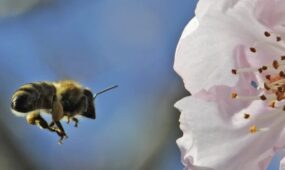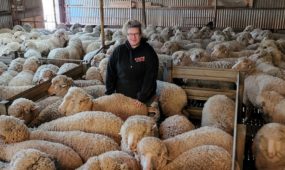Powdery mildew app helps global vignerons manage grape expectations
Primary Industries
A FREE mobile app to help vignerons and winemakers quickly assess grapes for powdery mildew in the field is being made available to growers globally.

Sign up to receive notifications about new stories in this category.
Thank you for subscribing to story notifications.
Developed in South Australia by the University of Adelaide in collaboration with industry and Wine Australia, the app was initially launched for use exclusively in Australia ahead of the 2016 vintage.
PMapp has been downloaded more than 1000 times and been well received by the Australian industry, prompting the construction of a training website to support the app and its international release this month.
Powdery mildew is a serious disease that affects grapevines worldwide and can cause off flavours and aromas in wine if not controlled.
University of Adelaide Professor of Plant Pathology and project leader Eileen Scott said she had already responded to inquiries about the app from North America, Chile, Europe and New Zealand.
“Powdery mildew is probably the most ubiquitous disease of grapevines – it occurs everywhere because it’s much less sensitive to weather conditions than other diseases like downy mildew or botrytis,” she said.
The disease is assessed in the vineyard as the percentage surface area of grape bunches affected, which gives a measure of disease severity.
PMapp allows the user to visually assess the severity by matching it with computer-generated images.
The app allows disease data to be entered quickly in the vineyard. Assessors then email the results and analyse the resulting spreadsheet, which records GPS co-ordinates and other assessment details.
Prof Scott said having Australian growers use the app for a year before the rest of the world allowed the system to be trialled thoroughly so any glitches could be fine-tuned.
“What we’ve built on to the app since we did the Australian release was a website designed to support diagnosis and recognition of powdery mildew as well as more training in early assessment than we could build into the app,” she said.
“The app allows people to enter their assessment quickly and efficiently to get an on the run average severity and average incidence across the block they are assessing.
“The website is designed for pre-vintage training of new staff and up-skilling or refreshing of existing and experienced staff so when they go out into the field they feel better prepared for the assessments.”
Australian users of the app in the 2016 vintage said it would become a valuable industry tool with some even using it to also assess grapes for bunch rot.
Australian Vignerons CEO Andrew Weeks said PMapp offered the potential for a uniform and reliable assessment procedure for powdery mildew, which in turn provided a consistent market signal for winegrowers.
“PMapp was a great tool in making decisions acceptable to both grower and winery,” he said.
Accolade Wines Chief Viticulturalist Alex Sas also supported the app.
“PMapp will quickly become part of the standard operating procedures of large wine companies in Australia and worldwide,” he said.
South Australia is consistently responsible for almost 50 per cent of Australia’s annual production.
There are 18 wine regions in South Australia, including the Barossa Valley, Clare Valley, Coonawarra, Adelaide Hills, Langhorne Creek, McLaren Vale, Limestone Coast and Riverland.
The PMapp is now available on Apple’s App Store or Google Play. The online resources can be found at pmassessment.com.au.
Jump to next article



